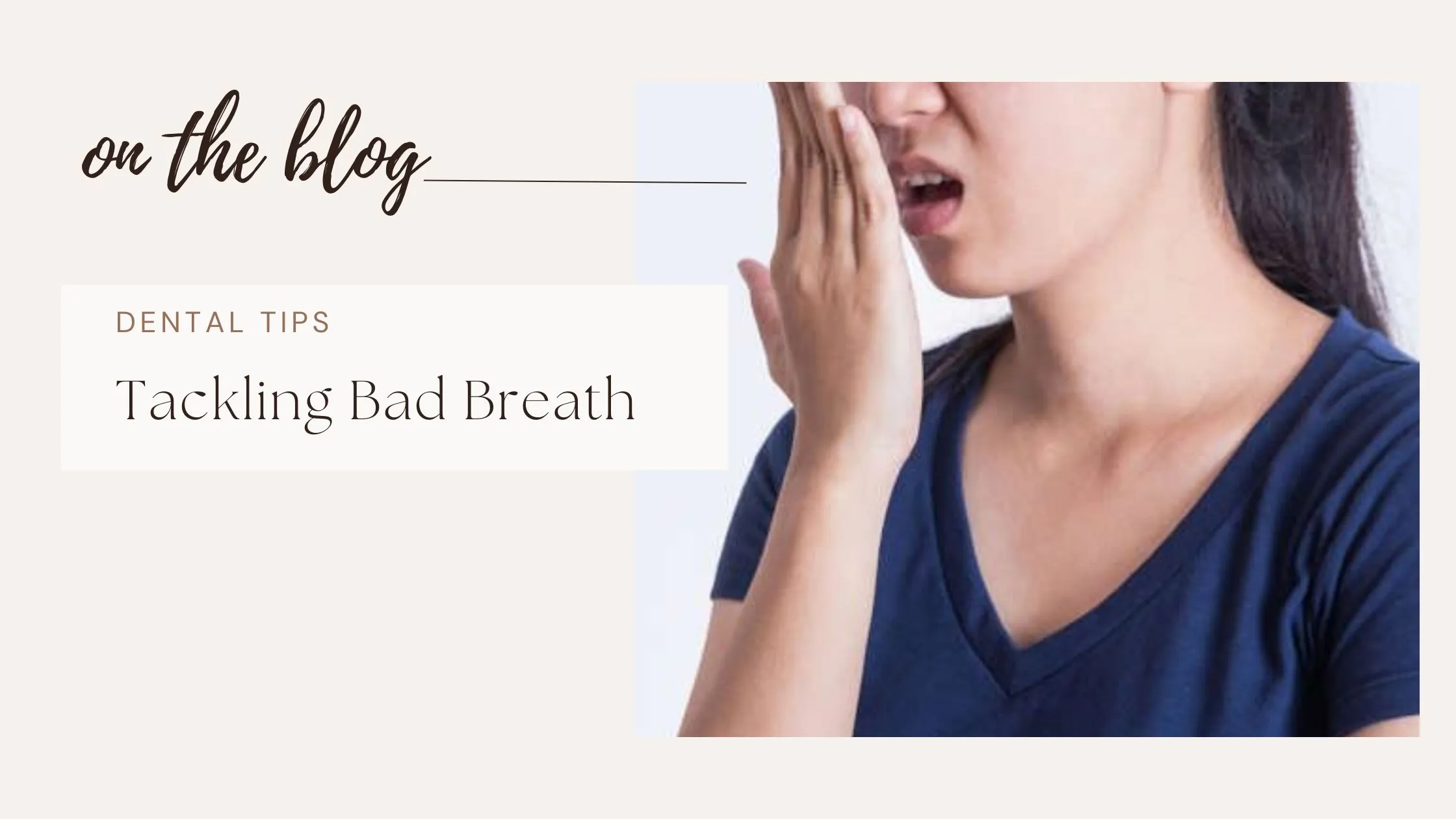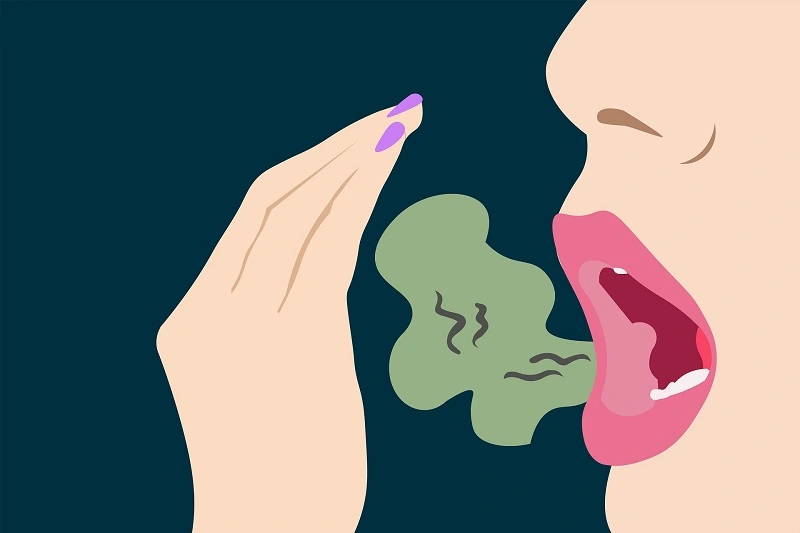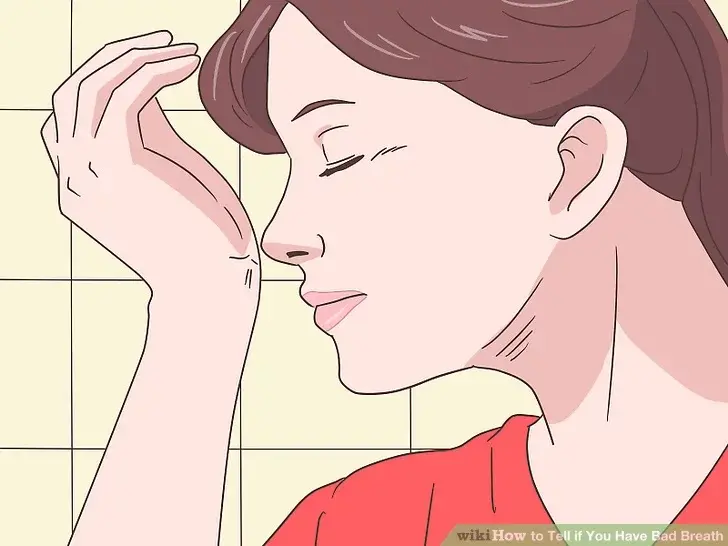
Bad breath, also known as Halitosis, is a common oral condition characterized by an unpleasant odor coming from one’s mouth. It can be unpleasant or sometimes even disturbing, if not repulsive.
It is a common condition that affects many people and can negatively impact the social and professional interactions and confidence of a person.

Bad breath can be caused by multiple reasons; a few possible causes of bad breath are listed below:
It is the most common cause of bad breath.
Lack of regular brushing and flossing causes a build-up of food particles between teeth, gums, and on the surface of the tongue, which results in the formation of plaque and an increase in the number of bacteria, leading to calculus and debris. Over time, this causes bad breath.
Remnants of food get stuck between teeth, creating a favorable condition for the growth of bacteria. The bacteria produce volatile sulfur-containing compounds, which cause an unpleasant smell. Bad breath becomes noticeable when the number of bacteria increases beyond the normal range.
Gingivitis, or the inflammation of gums caused by plaque, leads to swelling, redness, and bleeding of gums. Untreated gingivitis can progress to periodontitis, which further damages the surrounding gums and results in bone loss.
Periodontal diseases, or gum diseases are responsible for persistent halitosis.
Saliva helps to wash away the food particles, neutralizes the pH of the oral cavity, and moistens and lubricates the mouth. The enzymes and proteins in the saliva have antibacterial properties that prevent the growth of harmful bacteria and fungi.
When the production of saliva reduces, as a result of salivary gland hypofunction (xerostomia or dry mouth), the microbial load in the oral cavity increases, leading to malodor.
Oral cancers include cancers of the mouth, lips, cheeks, gums, tongue, hard palate, etc. They cause bad breath because of tissue decay, secondary infections, and difficulty maintaining oral hygiene, which allows bacterial growth to release foul-smelling compounds.
Some foods like onions, garlic, and spices may lead to oral malodour when consumed. Habits like smoking and alcohol also cause unpleasant smells. People who take a lot of medication may also have bad breath due to medicine-related dry mouth or superimposing oral infections.
Even though intraoral causes are largely responsible for halitosis, sometimes bad breath may be caused by issues in other parts of the body. These causes are referred to as extraoral causes of halitosis.
Infections of the larynx cause inflammation, post nasal drip and even pus, which may cause halitosis.
(Sinusitis, foreign bodies, bronchitis, lung abscess, malignancy) Sinusitis and nasal congestion lead to postnasal drip which causes halitosis, respiratory infections like bronchitis alter breath odor.
GERD causes stomach acids to leak into the esophagus, leading to halitosis. H. pylori bacteria can be found in periodontal spaces and contribute to halitosis.
Liver and kidney diseases lead to the accumulation of waste products and toxins in the body, which is then released via lungs, causing halitosis.
Diabetes mellitus causes a fruity or acetone like breath odor.
Hormonal fluctuations, especially in women can affect the production of volatile sulfur compounds in the body, leading to oral malodor.
A condition in which a patient believes he has bad breath but on examination, there is no evident pungent odor.
Let us look at some methods that may be used to evaluate halitosis.
Self-examination of bad breath can be done by:
- Smelling a metallic spoon after scraping the back of the tongue.
- Smelling a toothpick after using it in the interdental area.
- Licking the wrist and allowing it to dry and then smelling it.

- It is also called Organoleptic rating.
- It is a simple and subjective method that is used to test bad breath by having the clinician smell the patient’s breath and rate its intensity.
- The clinician sniffs the air expired by the patient and assesses whether it is unpleasant or not using an intensity rating from 0 to 5; where 0 suggests no odor and 5 suggests extremely foul odor.
- This electronic device measures the concentration of volatile sulfur compounds (VSCs)—hydrogen sulfide and methyl mercaptan which are produced by the bacteria in the mouth.
- The examination is usually done after 4 hours of fasting.
- The patient breathes into the device, which analyzes the breath and provides a reading.
High levels of VSCs indicate foul-smelling breath.
- Gas Chromatography (GC)
- Bacteria Smear or Culture
- Oral pH testing
- Saliva incubation test
- Brushing teeth twice a day for two minutes each time and flossing at least once a day is advised. This helps to remove food particles that cause bad breath.
- Brushing the surface of the tongue or using a tongue scraper to gently clean the tongue is also necessary since the surface of the tongue harbors bad breath-causing bacteria.
- Drinking plenty of water is important; it helps to keep the oral cavity moist and flush out the bacteria that contribute to halitosis.
- Visiting your dentist regularly for checkups and early detection of oral health problems like cavities and gum diseases helps to prevent bad breath.
- Alcohol causes dry mouth and contributes to gum diseases along with other oral health issues. Thus, excessive alcohol use must be avoided.
- Smoking and tobacco products not only cause bad breath but also increase the risk of serious health problems, including cancers. Therefore, it is advisable to quit the habit.
- Avoid foods like onion, garlic, caffeine, etc., that cause bad breath.
- Include crunchy fruits and vegetables in the diet, like apples and carrots, as they help in removing bacteria and diminish bad breath.
- Yogurt helps to balance gut and oral bacteria and decrease malodor.
- Mints, sprays, and chewing gums temporarily help to mask bad breath. Chewing gum also helps to stimulate saliva production and helps to flush away the bacteria and prevent bad breath.
- Using an alcohol-free, antibacterial mouthwash helps to reduce the bacteria in the mouth. Mouthwash rinses the teeth and reaches the interdental spaces, removing plaque and remnant food particles.
- Treating oral infections like tooth decay, abscesses, and gum diseases helps to maintain oral health.
- Removing plaque buildup and tartar, which is not cleaned using tooth brushing and flossing, by professional teeth cleaning is needed.
- Increased water intake, taking over-the-counter saliva substitutes, lozenges, and chewing gums for saliva production may be beneficial in reducing dry mouth symptoms and eliminating bad breath.
- Consulting a healthcare provider for diagnosis and treatment of underlying medical conditions can help in alleviating halitosis.
If you notice persistent bad breath for a few weeks even after regular brushing and flossing daily, with or without symptoms of bleeding gums or dry mouth, it is advisable to visit your dentist.
Bad breath even after brushing could indicate poor oral hygiene, underlying oral health issues, or other systemic health problems.
It is always a good idea to visit your dentist or your healthcare provider to evaluate and properly diagnose the issue.
Mouthwashes can be used to temporarily mask unpleasant odors. However, it does not treat the root cause. An evaluation by the dentist is generally required to diagnose the extent and then treat bad breath.
Think you have a bad breath? Book an appointment with our expert dentists at Dhriti Dental, Nallagandla and Manikonda, and get it examined now!
Dhriti Dental offers a range of dental services, from restorations, aligners to implant surgeries, visit us for your dental worries now!